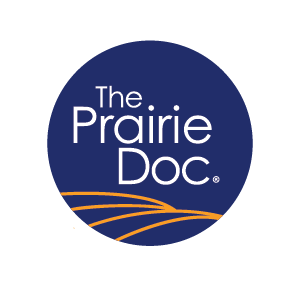Living with Parkinson’s Disease

“I am concerned your symptoms are due to Parkinson’s disease,” is something I have said to numerous patients over the years. This is a degenerative neurologic disease which is common enough that most patients have heard of it or even know someone living with it.
Most commonly, the patient or their family might have noticed classic symptoms: a tremor, difficulty with movement like walking, or balance problems. Importantly, not all tremor is Parkinson’s, though that is typically the biggest concern my patients have.
Parkinson’s disease is typically a diagnosis made by findings on history and physical exam; it is uncommon that further testing is used. Often, we will refer to our experts in neurology to confirm a suspected diagnosis. As a progressive neurological disease, we don’t currently have any tools to stop or slow the progression of Parkinson’s, but we have many tools to improve symptoms and quality of life.
First and foremost, regular exercise is paramount for patients with Parkinson’s. Quality of life and functional status is better in patients exercising with moderate intensity 150 minutes per week. The type of exercise doesn’t necessarily matter, so find something that is enjoyable enough to stick with.
Beyond independent exercise, specialized therapies administered by a qualified physical therapist and speech therapist can reduce symptoms. Physical therapists will help with walking, movement, and balance; speech therapists can improve patients’ speech and communication and, if needed, help with swallowing problems.
Medications are commonly used to help with tremor and rigidity in Parkinson’s disease. Most often, the first line treatment is a medication called carbidopa-levodopa, and most patients see immediate gratification with the effect of the medication on their movement symptoms. If needed, other medication options can be added.
Finally, options such as deep brain stimulation (DBS) can be used in more severe disease in which medications are not adequate to control motor symptoms. This involves insertion of a device into the affected area of the brain; electrical stimulation there alleviates those symptoms. Other interventions are sometimes used as well with the help of a specialty-trained neurologist.
In summary, Parkinson’s disease is fairly common as people age, and most patients live for many years with the disease. It is important to be educated on the disease and all the options that might improve symptoms and quality of life while one lives with Parkinson’s disease, and a qualified physician can help tailor those treatments to each individual patient.
Kelly Evans-Hullinger, MD. is part of The Prairie Doc® team of physicians and currently practices Internal Medicine at Avera Medical Group in Brookings, South Dakota. Follow The Prairie Doc® at www.prairiedoc.org, and on social media. Watch On Call with the Prairie Doc, most Thursday’s at 7PM streaming on Facebook and listen to Prairie Doc Radio Sunday’s at 6am and 1pm on SDPB Radio.





